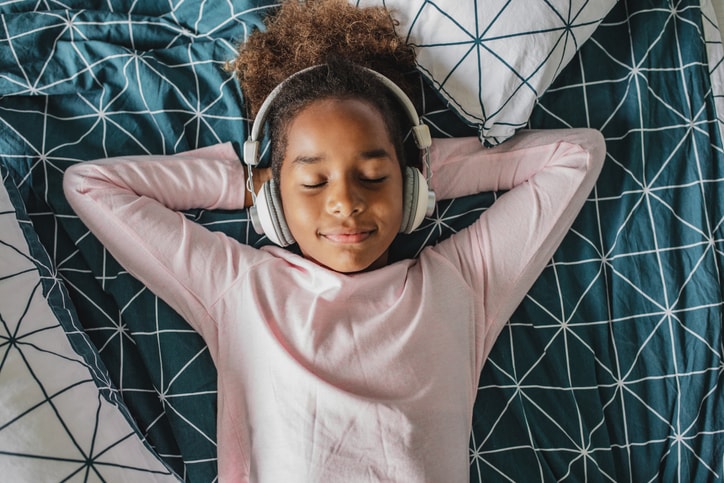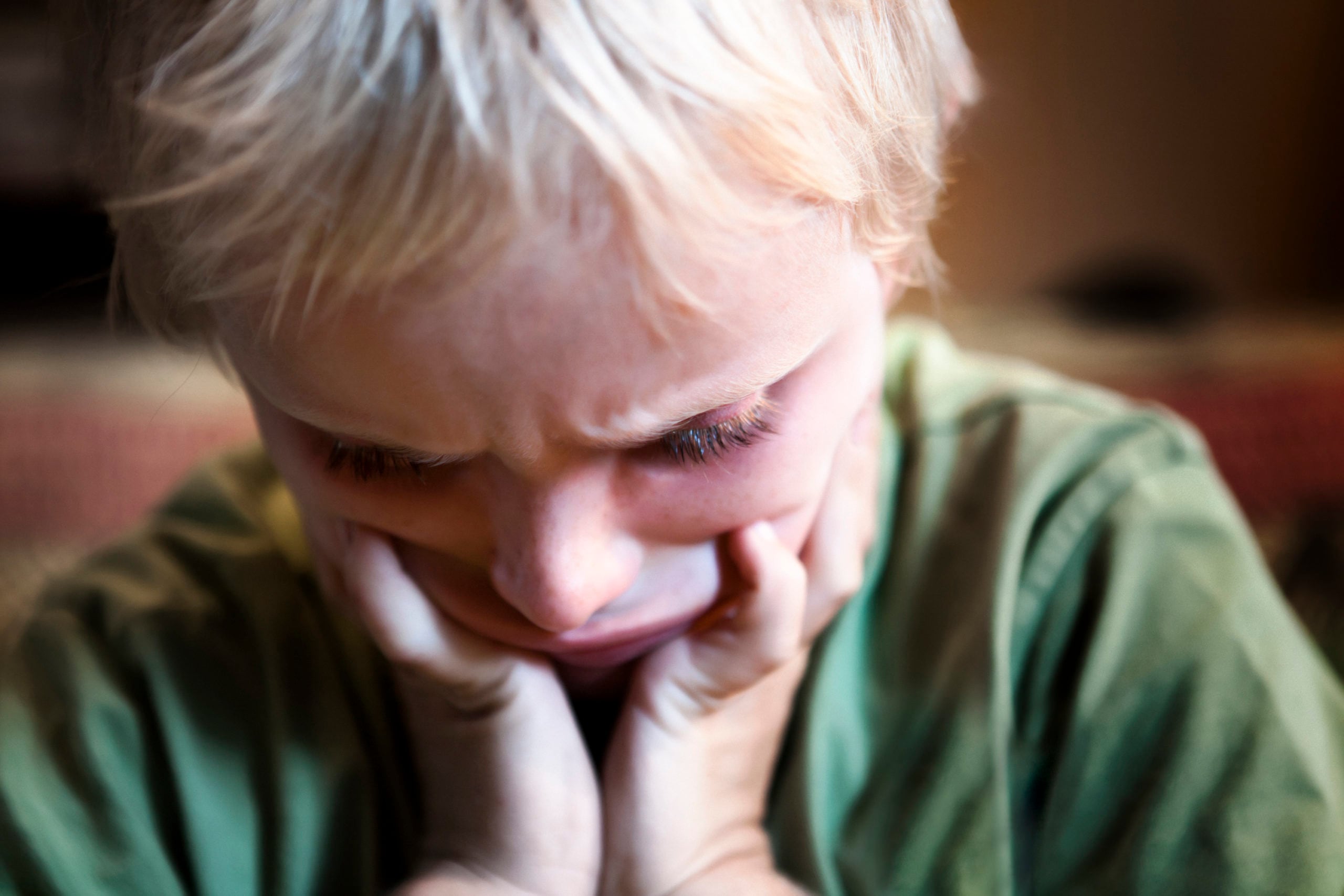In this article
After sitting at a desk and being inundated with information for the better part of six hours each day, it’s hardly a surprise that kids need to decompress after school. (Think about how you feel after the workday.)
“Children have to be ‘on’ all day at school — following rules, paying attention, learning and getting along with others,” notes Alison Flowers, a clinical psychologist who specializes in working with children, teens and families in Westlake, Ohio. “Because of this, it isn’t uncommon for kids to ‘fall apart’ when they get home, as their emotional and self-regulation skills have been overwhelmed. It is also a sign that home is their ‘safe place’ where they can show their emotions.”
Unlike adults, though, who may go for a walk or take a shower and change into comfy clothes after getting home, kids need some guidance for unwinding. From physical activities for kids itching to get wiggles out to quiet ideas for kids who need more measured “me time,” check out our list of calming activities after school.
Key takeaways
- After-school meltdowns, known as “restraint collapse,” happen when kids release stress built up from a structured day.
- Experts recommend calming routines like physical play, quiet time or mindfulness to help kids decompress.
- The goal is to support emotional regulation, not just stop the meltdown.
Why do kids struggle to calm down after school?
There’s actually a name for the unique brand of melting down some kids do post-school: after-school restraint collapse. Simply put, kids lose it after returning home because they’ve “spent hours managing expectations, following rules, suppressing impulses and processing stimulation,” explains Ayesha Ludhani, a clinical psychologist based in Berwyn, Pennsylvania.
“Their brains are in a state of alertness, especially if the school day involved academic pressure or sensory overload,” she continues. “This is especially true for neurodivergent children or those with anxiety or emotional regulation difficulties.”
What some adults might interpret as acting out or misbehaving is often a “release of accumulated stress,” she says.
It’s also worth noting that after-school restraint collapse doesn’t discriminate by age (though “meltdowns” can look different in younger and older kids).
“For younger children, it’s often an issue of being overtired and overstimulated from their environment,” notes Dr. Gayathri Kapoor, a pediatrician with Orlando Health. “Many older kids restrain their emotions and feelings during the school day as they try to be ‘good’ or ‘perfect,’ and in the safety of their home feel comfortable releasing these emotions. This can lead to a tantrum, restlessness or irritability.”
“It’s crucial to provide time and space for them to transition from the structured demands of school to the more flexible and emotionally safe environment of home.”
— Ayesha Ludhani, clinical psychologist
Calming activities for kids after school
You know the why, now it’s time to discover the how. Check out our list of wind down activities for kids, broken down by type.
Pro tip: Before getting to any of these activities, Flowers recommends an after-school decompression routine. “Unpack the backpack, change clothes and have a snack to signify the shift from school to home,” she suggests.
Physical wind down activities for kids
For kids with energy to burn, consider the following activities.
Dance it out
Kapoor suggests having a dance party with your child when they come home. “Music is one of the best ways to decompress and can really elevate your child’s mood,” she says.
Play a sport
Shoot hoops, kick the soccer ball around. A simple, non-competive game can be good for decompression, but, per Kapoor, “may not be the best idea if your child is exhausted.”
Play outside
Simple outdoor play — in the yard, at a playground — is a favorite after-school decompression activity of both Ludhani, and Brittany Nardone, a pediatric physical therapist who often works with kids on sensory overload.
Anything from “climbing, biking or swinging” can be great post-school, Nardone notes.
Take a walk
Going for a nature walk is “a low-pressure way to move and reset,” notes Nardone. Additionally, it’s a great time to casually chat. “I’m a fan of chatting about the day during a walk, as it often allows kids to feel less pressure to share about their day,” says Flowers.
Do a few exercises at home
Per Nardone, another good way to help kids regulate and “organize their body” after school is to do a few reps of the following:
- Jumping on a trampoline or bounce mat.
- Animal walks (bear crawl, crab walk, frog jumps).
- Carrying groceries or pushing a weighted laundry basket.
Quiet wind down activities for kids
For kids who can use a little more quiet (a.k.a less sensory input), here are a few options to consider.
Create a “calm down corner”
This, Nardone notes, can be a small area with “soft lighting, pillows or weighted items.” Think of it as a cozy nook for kids to shut out the outside world and reconnect to themselves.
And if you don’t have space for a calm down corner (or don’t feel like creating one), Kapoor says general “quiet time” can be just as effective.
“Allow kids to play in their room quietly for 10-30 minutes, without any electronic toys to minimize stimulation,” she says. “They can color, read or use non-electronic toys.”
Other quiet time activities Nardone and Luhani recommend include:
- Simple crafts with minimal mess.
- Playing with sensory bins with rice, kinetic sand or water beads.
- Listening to calming music with noise-canceling headphones.
- Listening to an audiobook.
- Reading or flipping through picture books.
- Fidget tools for quiet tactile engagement.
- Puzzles.
Mindfulness-based activities
There are tons of benefits to mindfulness for kids, including reduced anxiety, stress reduction and self-acceptance, to name a few. Mindfulness activities are also a great way to wind down after school or any overstimulating activity.
Here are a few mindfulness-based activities for kids to consider.
3-3-3 technique
This activity, which is a favorite of Flowers’, involves naming (internally or aloud) three things you can see, three things you can touch and three things you can smell in the moment.
Square breathing
Another favorite of Flowers’, square breathing (or box breathing) involves breathing in for a count of four, holding for four, releasing for four, holding for four and repeating.
Body scans with a visual aid or story
Nardone suggests body scans for kids as a way to get into their bodies. When the visual element is added, it can be another way for kids to draw upon their senses. Here’s a body scan video to try.
Progressive muscle relaxation
One suggestion from Ludhani is progressive muscle relaxation, which can be a good way to release tension, and again, get kids out of their minds and into their bodies. The simple technique involves tensing and releasing muscles. Check out this progressive muscle relaxation video for an explainer.
Give a gratitude prompt
Ludhani recommends giving kids a way to practice gratitude — and a way to calm down — by asking them something simple, like “what was one good thing today?”
Blow bubbles
Blowing bubbles, Nardone notes, “helps slow breathing and increase awareness” for kids.
“Ultimately, the goal is not just to ‘calm them down,’ but to support emotional regulation and provide a space where they feel safe and in control.”
— Ayesha Ludhani
Tips for decompressing after school
In addition to having a list of wind down activities, here’s what experts suggest in order to help kids decompress after school.
Offer a healthy snack
Offer kids a snack when they come home, Kapoor suggests. “Kids’ hunger is often forgotten about after school and this can lead to a meltdown,” she says. “A combination of fruits, veggies, nuts and some cheese is a great snack idea.”
Give them a moment
Resist the urge to thrust kids’ homework into their face when they arrive home. “It’s crucial to provide time and space for them to transition from the structured demands of school to the more flexible and emotionally safe environment of home,” Ludhani says. “A calm, non-demanding welcome can set the tone.
Instead of diving into homework or chores, tune into “the child’s energy state, offering choices that promote regulation rather than control,” she says.
Connection before correction
If your child is dysregulating when they come home from school, don’t jump into scolding. “Emotional co-regulation is more powerful than discipline when a child is dysregulated,” Ludhani notes.
Figure out your child’s wind down style
No two kids are alike when it comes to decompressing after school; it’s important to figure out how your child best relaxes.
“For sensory-seeking kids, movement is essential — they might decompress best by jumping, climbing or going for a walk before they even think about homework,” Nardone says. “Others might be sensory-avoidant and need stillness, quiet and reduced input. The most important thing is this: observe, don’t rush, and allow space for your child to unwind in a way that supports regulation — not control.”
Unwind together
Even if it’s not right after school, Flowers suggests having a family wind down or relaxation time. “Family relax time, where everyone reads, does a craft, goes for a walk or does mindful meditation may be helpful for all,” she says. “If everyone does it, it seems less like a chore for children.”
A final thought on decompression activities for kids
There’s an adjustment period after-school for kids, and when parents and caregivers give children the space for this, it can be wildly beneficial. “Ultimately, the goal is not just to ‘calm them down,’ but to support emotional regulation and provide a space where they feel safe and in control,” Ludhani says.
“What looks like a meltdown is often a cue that a child feels overloaded or unheard,” she adds. “There is a long-term value in building these regulation skills early — it creates resilience, improves executive functioning and strengthens the bond between parent and child.”





